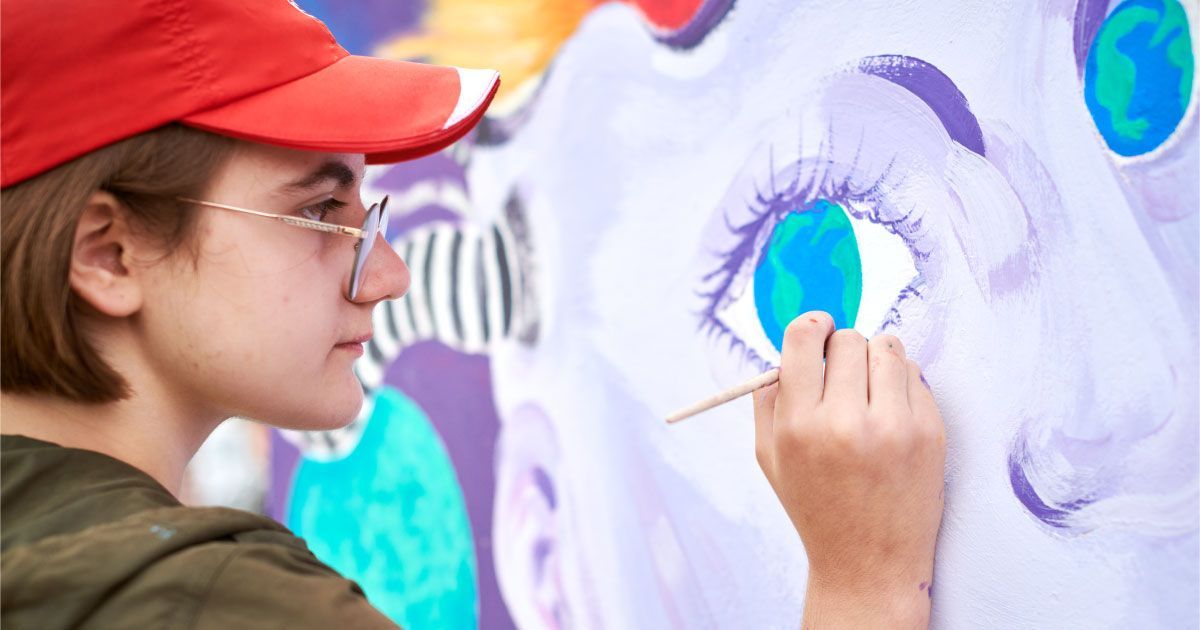From Stargazing to Sight: The Shared Legacy of Telescopes and Vision Correction

Read time: 5 minutes
Telescopes have revolutionized our understanding of the cosmos, acting as humanity’s window to the stars. From Galileo’s groundbreaking observations of Jupiter’s moons to today’s advanced space telescopes capturing images of distant galaxies, these instruments have opened up a universe of possibilities. In this blog, we will explore the history and evolution of telescopes, their key features, and how their optical principles relate to vision and eye care.
What Exactly is a Telescope?
A telescope is an optical device designed to observe distant objects by collecting and focusing light. By magnifying celestial bodies like planets, stars, and galaxies, telescopes allow us to explore the universe far beyond the reach of the naked eye. Key features of telescopes include:
- Objective Lens or Mirror: Gathers and focuses light to form an image.
- Eyepiece: Magnifies the image for the viewer.
- Magnification Power: Makes distant objects appear larger and clearer.
- Focal Length: The distance between the objective lens/mirror and the eyepiece, determining the telescope’s magnification.
Telescopes operate on the same optical principles as the lenses in your glasses or contact lenses, bending light to focus it accurately. This similarity makes telescopes not just instruments of discovery but also remarkable demonstrations of how optics improve vision.
The Origins of Telescopes: Ancient Optical Innovations
Long before telescopes, ancient civilizations were experimenting with lenses for reading and vision correction. These early innovations in optics laid the foundation for telescopic advancements.
- Ancient Optical Devices: Magnifying glasses and rudimentary lenses were used by the Greeks and Romans to improve vision. These early lenses demonstrated the ability to bend light—a principle later harnessed in telescopes.
- The Invention of the Telescope (1608): Hans Lippershey, a Dutch lensmaker, is often credited with creating the first telescope in 1608. His design used simple convex lenses to magnify distant objects, a concept further refined by later scientists.
Galileo’s Revolutionary Observations: The Birth of Modern Astronomy
Galileo Galilei’s use of the telescope in 1609 marked a turning point in both science and optics. By building his own telescope, he observed the craters of the Moon, the moons of Jupiter, and sunspots, challenging the long-held belief that Earth was the center of the universe.
Galileo’s telescope used a convex objective lens and a concave eyepiece. It had a modest magnification of 30x, yet it transformed humanity’s understanding of the cosmos.
Galileo’s innovations also demonstrated the importance of precision in lens crafting—an aspect shared with today’s prescription eyeglasses and contact lenses.
Advancing Optics: Reflecting Telescopes and Modern Lenses
Isaac Newton’s invention of the reflecting telescope in 1668 was a game-changer. By using mirrors instead of lenses, Newton eliminated chromatic aberration, a common issue with early refracting telescopes where colors would blur at the edges of objects. This innovation also allowed for larger, more powerful telescopes.
Just as telescopes evolved to address issues like chromatic aberration, modern eyeglass lenses are designed to minimize distortions and improve visual clarity. Progressive lenses, for example, offer a seamless transition between near and far vision, similar to how advanced telescopes offer clarity across a wide field of view.
Telescopes and Vision: The Shared Science of Optics
Both telescopes and corrective lenses work by bending (refracting) or reflecting light to focus it properly. The parallels between these fields and the shared optical principles are striking:
- Light Refraction: Glasses and telescopes use lenses to bend light rays to correct focus.
- Precision in Curvature: The curvature of a telescope’s lens or mirror mirrors the precise curvatures needed in contact lenses to fit the eye’s shape.
- Magnification vs. Correction: Telescopes magnify distant objects, while eyeglasses and contacts correct refractive errors like myopia or astigmatism to focus light on the retina.
Fun Fact: The same technology used in adaptive optics for telescopes to correct atmospheric distortions has inspired advancements in LASIK surgery for vision correction.
How Telescopes Paved the Way for Modern Optical Lenses
The meticulous craftsmanship required for telescope lenses has driven improvements in lens-making technology. Today’s high-quality eyeglass lenses benefit from the same principles of precision and clarity that revolutionized telescope design. Some of the improvements inspired by telescope optics include:
- Anti-Reflective Coatings: First developed for telescope lenses to enhance light transmission, now widely used in eyeglasses to reduce glare.
- High-Index Materials: Thin, lightweight lenses in modern eyeglasses echo advancements in telescope lens materials.
- Wavefront Technology: Originally used in telescopes to study light waves from stars, this technology is now applied to measure refractive errors in customized eyeglass prescriptions. Read about the digital technology available at Urban Optiks
Modern Telescopes: Expanding Our Horizons
Today’s telescopes are marvels of engineering, whether they’re on Earth or in space. The James Webb Space Telescope, for example, uses a massive gold-coated mirror to observe the universe in infrared light, peering into the earliest moments after the Big Bang. Learn more about the Webb Telescope at the Webb Space Telescope webiste.
The cutting-edge optics in modern telescopes have applications in medical imaging and eye care. For example:
- Corneal Imaging: Techniques developed for studying stars are used to map the cornea during eye exams.
- Retinal Scanning: Advanced imaging technologies in astronomy have influenced devices used to detect eye diseases like macular degeneration.
The Intersection of Telescopes and Vision: A Shared Legacy
Whether observing distant galaxies or focusing on the fine print of a book, telescopes and vision correction share a common goal: enhancing our ability to see clearly. The evolution of telescopes—from Galileo’s rudimentary designs to today’s space-based marvels—parallels the journey of vision science, from simple reading glasses to advanced multifocal contact lenses.
For stargazers and spectacle wearers alike, the shared foundation of precision optics underscores the importance of clear, accurate focus. The history of telescopes vividly illustrates the remarkable advancements in optics technology and its profound influence on everyday life. By understanding these shared principles, we can better appreciate the tools that enhance our vision, whether they bring the distant stars closer or sharpen our view of the world right before us.
The Takeaway
Telescopes have not only unlocked the mysteries of the universe but also inspired countless innovations in optical science. As you gaze at the stars or read this blog through your glasses or contact lenses, take a moment to appreciate the shared legacy of telescopes and vision correction. Both have transformed how we see and understand the world around us.
At Urban Optiks Optometry, we celebrate this connection between science and everyday vision. Visit us to learn more about our
cutting-edge digital lenses by Zeiss Vision Care - just like the telescopes that inspire them!
Share this blog post on social or with a friend:
The information provided in this article is intended for general knowledge and educational purposes only and should not be construed as medical advice. It is strongly recommended to consult with an eye care professional for personalized recommendations and guidance regarding your individual needs and eye health concerns.
All of Urban Optiks Optometry's blog posts and articles contain information carefully curated from openly sourced materials available in the public domain. We strive to ensure the accuracy and relevance of the information provided. For a comprehensive understanding of our practices and to read our full disclosure statement, please click here.


















